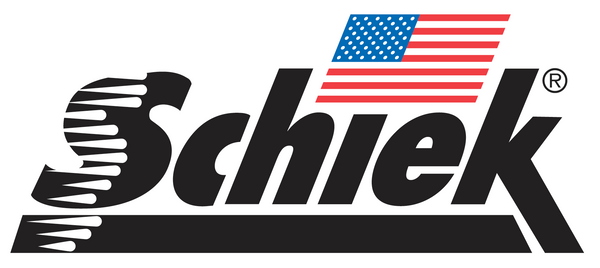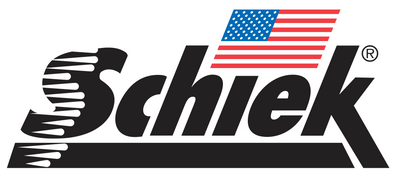Are you looking to take your weightlifting training to the next level? Look no further - the ultimate weightlifting belt lineup by Schiek. Here to boost your lifts and protect your core. Whether you're a seasoned lifter or just starting out, a high-quality weightlifting belt is an essential tool that can make a significant difference in your lifting performance.
Crafted from premium materials and designed with precision, Schiek weightlifting belts provide unparalleled support and stability during your lifts. Its adjustable strap ensures a snug and comfortable fit, allowing you to focus on pushing your limits without worrying about discomfort or injuries.
Not only do Schiek belts offer exceptional support, but they also helps protect your core. By applying pressure to your abdominal area, it helps stabilize your spine and prevent excessive flexion or extension during heavy lifts. This added support promotes proper lifting technique and reduces the risk of strain or injury.
Don't let discomfort or lack of support hold you back in the weight room. Invest in the ultimate weightlifting belt and unleash your full potential. Boost your lifts, protect your core, and elevate your training to new heights.
The importance of core stability in weightlifting
Core stability is paramount in weightlifting. The core muscles, which include the abdominal, back, and hip muscles, play a crucial role in maintaining proper form and generating power during lifts. When the core is stable and engaged, it helps to transfer force from the lower body to the upper body, allowing for greater efficiency and control during the lift.
Without sufficient core stability, lifters are at a higher risk of injury, as the spine and other joints may become overloaded and unable to handle the demands of the lift. Poor core stability can lead to excessive spinal flexion or extension, which can put strain on the lower back and increase the likelihood of a debilitating injury. Additionally, a weak core can compromise the lifter's ability to maintain proper bar path and technique, ultimately limiting their lifting performance.
Developing and maintaining core strength is essential for any weightlifter, regardless of their experience level. By prioritizing core-strengthening exercises and ensuring proper core engagement during lifts, weightlifters can enhance their stability, power, and overall lifting performance, while also reducing the risk of injury. A well-designed weightlifting belt can be a valuable tool in this pursuit, providing the necessary support and stability to help lifters maximize their potential.
Benefits of using a weightlifting belt
Using a weightlifting belt can provide numerous benefits for lifters, both in terms of performance and injury prevention. One of the primary advantages of a weightlifting belt is the enhanced core stability it offers. By applying pressure to the abdominal area, the belt helps to create a more stable and rigid foundation for the lifter, allowing them to generate more force and maintain better control during the lift.
This increased core stability can lead to improved lifting technique, as the lifter is better able to maintain proper form and keep the spine in a neutral position. This, in turn, reduces the risk of spinal injuries, such as herniated discs or strains, which can be common in weightlifting. Additionally, the belt's support can help to alleviate the strain on the lower back, which is often a vulnerable area for lifters.
Another key benefit of using a weightlifting belt is the boost in lifting performance it can provide. By creating a more stable and efficient transfer of force from the lower body to the upper body, the belt can help lifters move heavier weights with greater ease. This can lead to significant improvements in lift numbers, as well as increased confidence and motivation in the weight room.
Furthermore, a high-quality weightlifting belt can also offer protection for the abdominal area during heavy lifts. The compression and support provided by the belt can help to prevent excessive intra-abdominal pressure, which can be a contributing factor to hernias or other abdominal injuries. This added protection can give lifters the peace of mind to push their limits without worrying about potential harm to their core.
Types of weightlifting belts
When it comes to weightlifting belts, there are several different types available, each with its own unique features and benefits. The most common types of weightlifting belts include:
- Leather Belts: Leather belts are a classic and durable option for weightlifters. They are typically thicker and stiffer than other materials, providing a high level of support and stability during lifts. Leather belts are often considered the gold standard in the weightlifting community, as they can last for years with proper care and maintenance.
- Nylon Belts: Nylon belts are a more lightweight and flexible alternative to leather. They are often more affordable and can be a good option for lifters who prefer a more comfortable, less restrictive feel during their workouts. Nylon belts may not provide the same level of rigid support as leather, but they can still offer valuable core stabilization.
- Velcro Belts: Velcro belts are a popular choice for their ease of use and adjustability. They feature a Velcro closure system, allowing lifters to quickly and easily secure the belt around their waist. Velcro belts are often a good option for lifters who need to adjust their belt size frequently or want a more customized fit.
- Lever Belts: Lever belts are a more specialized type of weightlifting belt that features a metal lever closure system. This closure mechanism provides a secure and consistent fit, making it a popular choice for competitive lifters or those who prioritize maximum support and stability during their lifts.
Each type of weightlifting belt has its own advantages and disadvantages, and the best choice will depend on the individual lifter's preferences, training goals, and budget. It's important to consider factors such as material, thickness, closure system, and overall quality when selecting the right weightlifting belt for your needs.
How to choose the right weightlifting belt for you
Choosing the right weightlifting belt can be a crucial decision for any lifter, as the wrong belt can hinder performance and increase the risk of injury. When selecting a weightlifting belt, there are several key factors to consider:
- Fit and Adjustability: The belt should fit snugly around your waist, providing a secure and stable base without being overly restrictive. Look for belts with adjustable closures, such as Velcro or lever systems, to ensure a customized fit.
- Width: The width of the belt can vary, with most ranging from 3-4 inches. Wider belts generally provide more support and stability, making them a better choice for heavier lifts. Narrower belts may be more comfortable for some lifters, especially during overhead movements.
- Thickness: Thicker belts, typically in the range of 10-13mm, offer more rigidity and support, while thinner belts (around 6-8mm) tend to be more flexible and comfortable. The optimal thickness will depend on your personal preferences and the type of lifting you predominantly engage in.
- Material: As mentioned earlier, the most common materials for weightlifting belts are leather and nylon. Leather belts are often considered the gold standard for their durability and support, while nylon belts can be a more affordable and lightweight option.
- Quality and Construction: Invest in a belt from a reputable brand that uses high-quality materials and craftsmanship. A well-made belt will not only last longer but also provide superior support and stability during your lifts.
- Intended Use: Consider the specific types of lifts and exercises you'll be using the belt for. Some belts may be better suited for powerlifting, while others may be more versatile for general weightlifting or CrossFit-style workouts.
By carefully considering these factors, you can select a weightlifting belt that perfectly fits your body, lifting style, and performance goals. Remember, the right belt can make a significant difference in your lifting experience, so take the time to find the one that works best for you.
Proper usage and technique when using a weightlifting belt
Using a weightlifting belt correctly is essential to maximize its benefits and avoid potential risks. Here are some guidelines for proper usage and technique:
- Timing of Use: The ideal time to use a weightlifting belt is during your heavier, more challenging lifts, such as squats, deadlifts, and overhead presses. For lighter warm-up sets or accessory exercises, you may not need to wear the belt.
- Proper Fit: Ensure that the belt is snug and secure around your waist, but not so tight that it restricts your breathing or movement. The belt should sit just above your hip bones, with the closure centered over your navel.
- Bracing Technique: When wearing the belt, focus on taking a deep breath and bracing your core muscles before initiating the lift. This helps to create intra-abdominal pressure, which the belt can then support and transfer to the spine.
- Maintaining Neutral Spine: Throughout the lift, maintain a neutral spine position, avoiding excessive rounding or arching of the back. The belt should help you maintain this neutral alignment, but it's still essential to focus on proper form.
- Controlled Movements: Avoid jerky or explosive movements when using a weightlifting belt. Instead, focus on smooth, controlled lifts, ensuring that you're engaging your core and transferring power efficiently.
- Gradual Progression: If you're new to using a weightlifting belt, start with lighter weights and gradually increase the load as you become more accustomed to the added support and stability.
- Alternate Use: It's generally recommended to alternate between using and not using the belt during your training sessions. This can help to ensure that your core muscles remain strong and engaged, even without the added support.
By following these guidelines, you can effectively incorporate a weightlifting belt into your training routine, reaping the benefits of enhanced core stability and lifting performance while minimizing the risk of injury.
Common mistakes to avoid when using a weightlifting belt
While a weightlifting belt can be a valuable tool for enhancing performance and protecting the core, it's important to be aware of common mistakes that can undermine its effectiveness. Here are some common mistakes to avoid when using a weightlifting belt:
- Overly Tight Fit: Wearing the belt too tightly can restrict breathing and blood flow, leading to discomfort and potentially compromising your lifting technique. Ensure that the belt is snug but not uncomfortably tight.
- Improper Positioning: Placing the belt too high or too low on the waist can reduce its effectiveness in supporting the core. The belt should sit just above the hip bones, with the closure centered over the navel.
- Over reliance on the Belt: While the belt can provide valuable support, it's essential to maintain core strength and engagement. Relying too heavily on the belt can lead to a weakening of the core muscles over time.
- Inconsistent Use: Wearing the belt only occasionally or during specific exercises can prevent your body from fully adapting to the added support. Aim for consistent use during your heavier lifts to maximize the benefits.
- Incorrect Bracing Technique: Failing to properly brace the core by taking a deep breath and engaging the abdominal muscles can limit the belt's effectiveness in stabilizing the spine.
- Ignoring Proper Lifting Form: The belt should complement good lifting technique, not compensate for it. Maintain proper form and body positioning throughout the lift, as the belt is not a substitute for proper technique.
- Neglecting Core Strengthening: While the belt can provide valuable support, it's essential to also focus on core-strengthening exercises to build a strong foundation and reduce the risk of injury.
By being mindful of these common mistakes and making the necessary adjustments, you can ensure that your use of a weightlifting belt enhances your lifting performance and protects your core without compromising your overall strength and stability.
Tips for maintaining and caring for your weightlifting belt
Investing in a high-quality weightlifting belt is an important step, but it's equally crucial to properly maintain and care for it to ensure its longevity and continued performance. Here are some tips for maintaining and caring for your weightlifting belt:
- Clean and Condition Regularly: For leather belts, use a mild soap and water solution to clean the surface, then apply a leather conditioner to keep the material supple and prevent cracking. For nylon belts, a simple wipe-down with a damp cloth can help remove any dirt or sweat residue.
- Store Properly: When not in use, store your weightlifting belt in a cool, dry place, away from direct sunlight or heat sources. Avoid folding or creasing the belt, as this can lead to permanent deformation over time.I
- Inspect for Wear and Tear: Regularly inspect your belt for any signs of damage, such as fraying, cracking, or loose stitching. Address any issues promptly to prevent further deterioration and ensure the belt's continued effectiveness.
- Avoid Excessive Exposure to Moisture: While a little sweat is unavoidable during your workouts, try to minimize the belt's exposure to excessive moisture. Wipe down the belt after each use and allow it to fully dry before storing.
- Rotate Multiple Belts: If you have the opportunity to own more than one weightlifting belt, consider rotating their use. This can help to extend the lifespan of each belt and prevent any single one from becoming overly worn.
- Seek Professional Repair: If your belt does sustain significant damage, such as a torn or broken closure, consider seeking professional repair services rather than attempting to fix it yourself. This can help to ensure the integrity and continued performance of the belt.
- Replace When Necessary: Even with proper care and maintenance, weightlifting belts have a finite lifespan. Be prepared to replace your belt every few years, or sooner if it shows signs of significant wear and tear.
By following these tips, you can help ensure that your weightlifting belt remains in top condition, providing the support and stability you need to excel in the weight room for years to come.
Conclusion: The ultimate weightlifting belt for enhanced performance and core protection
In conclusion, Schiek weightlifting belt is the ultimate must-have tool for any serious lifter looking to boost their performance, protect their core, and reduce the risk of injury. By providing unparalleled support and stability during heavy lifts, a high-quality weightlifting belt can help you unlock your full potential and take your training to new heights.
Whether you're a seasoned powerlifter or a dedicated CrossFit athlete, the right weightlifting belt can make a significant difference in your lifting experience. By enhancing core stability, promoting proper form, and alleviating strain on the lower back, the ultimate weightlifting belt can help you push past plateaus, lift heavier weights, and achieve your fitness goals with greater confidence and safety.
But the benefits of a weightlifting belt extend beyond just the physical aspects of lifting. The added support and stability can also provide a psychological boost, allowing you to focus on the task at hand without worrying about potential discomfort or injury. This can lead to increased motivation, improved mental focus, and a more enjoyable overall training experience.
Investing in a Schiek weightlifting belt is an investment in your long-term success as a lifter. By properly incorporating it into your training routine and maintaining it with care, you can enjoy the benefits of this essential piece of equipment for years to come. So, don't settle for anything less than the best – upgrade to the ultimate weightlifting belt and unlock your full potential today.






Leave a comment